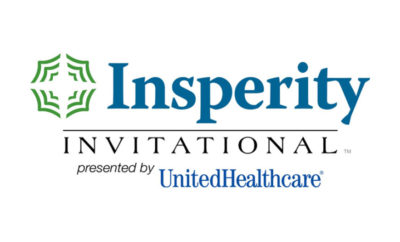 Photo Credit: CDC
Photo Credit: CDCBusiness
General Guidance for Employers During the COVID-19 Pandemic
The following article was originally published on The Strong Firm P.C. website
As employers and the community navigate through these uncertain and trying times, The Strong Firm is helping their clients and business owners navigate through emerging employment issues during the COVID-19 crisis.
The following are some General Guidance for Employers During the COVID-19 Pandemic to better protect your workforce and business, and stay responsive to employee and business needs:
- Require employees who are ill to stay home.
- The federal Equal Employment Opportunity Commission (EEOC) has published Pandemic Preparedness guidance that provides that, during a pandemic, employers are permitted to ask employees the reasons for their absence from work, including if the employee is experiencing certain symptoms (such as cough or fever). The EEOC updated this guidance on March 18, 2019 to specifically address frequently asked questions and answers from employers related to inquiries they can make related to COVID-19 issues.
- If you learn that an employee has tested positive for COVID-19, immediately advise your workforce and any effected other contacts (such as clients, customers, vendors), without disclosing any identifying information about the positive employee.
- Also, immediately contact your local public health agency for assistance in determining the appropriate next steps, including appropriate cleaning measures, other notices that may be needed to impacted persons, and potential quarantines or shut down.
- Require a doctor’s note to return to work after exhibiting symptoms of the Coronavirus. The EEOC’s Pandemic Preparedness guidance provides that an employer may require employees who missed work during a pandemic to provide a doctor’s note certifying their fitness to return to work.
- Require employees to give notice of illness of members in their immediate household or of others with whom they have close contact (per the CDC’s Interim Guidance for Businesses and Employers).
- Then assess the risk of contagion (see the Interim U.S. Guidance for Risk Assessment and Public Health Management of Healthcare Personnel with Potential Exposure in a Healthcare Setting to Patients with Coronavirus Disease).
- Consider requiring employees who have traveled to stay home for 14 days.
- Require employees to report where they are traveling and dates of travel for those employees taking time off for personal travel.
- The CDC’s most recent guidance provides that employees “may be asked to stay home for a period of 14 days from the time they left an area with a widespread or ongoing community spread….”
- Notify employees they will be subject to this 14-day “stay at home” period if they intend to travel, or that their request for time off for travel will be denied because of the inability to return to work within a reasonable period of time or before the employee’s PTO is exhausted.
- Require employees to report when individuals with whom they have close contact (such as same household members) travel to high-risk areas.
- Consider work-from-home options for all or a portion of your workforce.
- Ensure employees who are not accustomed to remote work are outfitted with the resources they will need, including (a) technological resources (such as computers, internet service, remote network connectivity, printers, monitors, telephone), (b) basic office supplies, and (c) critical work files/materials that are not available online or are difficult to work with in electronic form.
- Digitize any relevant files/materials not already in electronic form, and ensure such materials are saved to networks for access by all appropriate users.
- Consult with your IT staff or vendor about anticipated resource needs and limitations, and potential measures (such as cloud-based network/application gateways) to better safeguard corporate information from potential hackers and other security risks.
- Establish and communicate clear expectations for remote work, including how employees will receive new assignments, remain in touch with other personnel, report their working hours, deliver work product, etc.
- Encourage robust communication – the more communicating about current status of projects, needs, unanticipated difficulties, etc., the better.
- Consider pairing employees or groups of employees up for set (i.e., daily, twice daily, etc.) or ad hoc mentoring or brainstorming sessions by phone, video conference, text group, or electronic chat/messaging.
- Consider establishing a COVID-19 Response Committee at your office to track emerging issues and concerns and promptly determine plans of action.
- Provide employees with easy to understand guidance on CDC guidelines for “social distancing,” that are as applicable within the workplace as they are in public spaces.
- Regularly clean high-touch surfaces.
- Limit shared food in the office.
- Consider shortening business hours to reduce overhead and contacts.
- Consider mental health needs (see further discussion on this below).
- Consider lay-offs and unemployment benefit rights.
- The Texas Workforce Commission (TWC) administers unemployment benefits in Texas. TWC has established a “COVID” page on its website (search “TWC” and “COVID”). On this page, there is a place to subscribe to COVID-related email updates.
- For those employees laid off in this crisis, the TWC is waiving the usual one-week waiting period for receiving benefits and waiving the usual work search requirements to continue to claim benefits every two weeks.
- While extended benefits periods were not announced as of the writing of this publication, in past financial downturns, the TWC has extended the usual 26-week limit for benefits to allow unemployed workers to continue to collect benefits beyond the usual limit.
- Stay mindful of wage and hour laws.
- The federal Fair Labor Standards Act (FLSA) requires an employer to pay a salaried, overtime exempt employee their full weekly salary, regardless of the quantity of work performed, for any workweek in which the employee performed any work – otherwise the employer jeopardizes losing the overtime exempt status for that worker and similarly situated workers.
- There are two potentially applicable exceptions to this, but they are very narrow: (a) the employee is absent from work for one or more full days for personal reasons other than sickness or disability; or (b) for absences for one or more full days due to sickness or disability, so long as the deduction is made in accordance with a bona fide plan, policy or practice for providing pay for salary lost due to illness (i.e., pursuant to a sick pay plan).
- Consider mental health needs.
- Encourage employees to establish healthy limits on the amount of news coverage they are consuming on the crisis.
- Encourage employees to use paid time off benefits if they are concerned about reporting to work, so long as business needs are not compromised.
- Encourage employees to stay “virtually” connected, with continuous phone, email, text, or chat/messaging communications among and with workers who are telecommuting or quarantining.
For more information, visit The Strong Firm P.C. website at https://www.thestrongfirm.com/blog/general-guidance-for-employers-during-the-covid-19-pandemic/#
NOTE: The foregoing message was for informational purposes only and was not intended to nor should it be construed as legal advice for any particular situation or circumstances. This discussion was meant as a general overview and cannot replace the guidance of legal counsel. Employers are encouraged to consult with experienced legal counsel before taking any employment actions that implicate federal, state or local employment laws, including, without limitation, the FLSA, Americans with Disabilities Act, Title VII, Texas Commission on Human Rights Act, Family and Medical Leave Act, National Labor Relations Act, or Worker Adjustment Retaining Notification Act.
Source: The Strong Firm P.C.



























0 comments